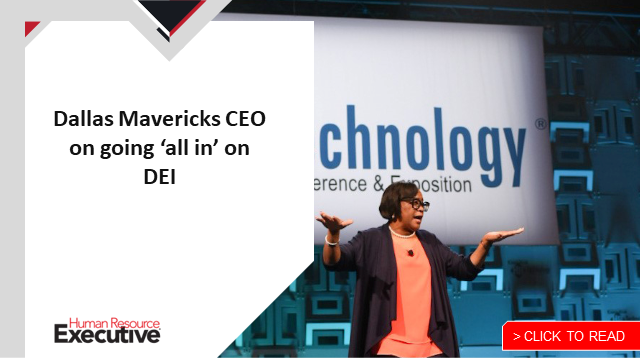What attracts and keeps talent? Opportunity. Prospective and current employees perceive opportunity based on many factors, including the company’s name, reputation and product, as well as its ability to promote inclusion, provide challenging but rewarding work and offer paths to growth. The CHRO naturally wants the right talent to be knocking down the company’s doors seeking roles, so this role is often at the forefront of the C-suite’s efforts to maximize opportunity. The CHRO can and should serve as the lifeline between employees and the executive team, keeping a pulse on the business and communicating initiatives in a way employees can understand and embrace, and that ultimately translates into opportunity.
Because this priority impacts every part of a company, today’s CHROs need solid knowledge about business interests, product development and organizational maturity—but that’s only the beginning. There are a few factors that play a critical role in determining how successful the CHRO can be, and by focusing on them, CHROs can set themselves up to achieve optimal communication and alignment among employees and executives. This alignment can tap into, cultivate or even redirect the opportunities internal and external talent is seeking.
Secure your seat at the table
HR plays a key role in crafting and sustaining communication across the company and ensuring that company culture nurtures and guides employees while supporting key business goals. In fact, other executives can and should rely on the CHRO for advice on communicating a broad spectrum of hot topics, including business imperatives, strategy and shifts in company-wide or team direction, to name a few. In doing so, the employee perspective or impact, which is often overlooked or minimized, can carefully be taken into account.
Taking on this bigger role requires speaking with a bigger voice. You cannot succeed as a modern CHRO if you only have expertise in human resources. Rather, you have to understand the entire business ecosystem to give effective advice, tailored to your company’s level of maturity. An early-stage start-up, a scaled start-up and a large enterprise all have different operational velocities, business positioning and goals to consider. These insights help craft approaches and guide decisions across a company.
 Even “routine” human resources tasks can’t take place in a vacuum. It’s essential to understand how the culture you promote accounts for employees’ needs, wellness and opportunities for growth. The CHRO is valuable to the C-suite because the role combines a global understanding of how business units interact with the ability to influence culture across technical and nontechnical teams. You may not understand how to code, but you should still invest time learning what makes developers thrive, unhappy or frustrated, and what factors lead to burnout. From there, you will have the insight necessary to advocate or redirect them and advise your tech leaders in a way that supports the business trajectory and retain engaged talent.
Even “routine” human resources tasks can’t take place in a vacuum. It’s essential to understand how the culture you promote accounts for employees’ needs, wellness and opportunities for growth. The CHRO is valuable to the C-suite because the role combines a global understanding of how business units interact with the ability to influence culture across technical and nontechnical teams. You may not understand how to code, but you should still invest time learning what makes developers thrive, unhappy or frustrated, and what factors lead to burnout. From there, you will have the insight necessary to advocate or redirect them and advise your tech leaders in a way that supports the business trajectory and retain engaged talent.
Effectively assess your company’s needs to ensure buy-in
CHROs are most likely to get buy-in from other executives if their priorities are backed by both solid reasoning for why they will help employees and compelling evidence that something needs to be improved. Here are a few suggestions for the best way to do that:
- Ingest feedback through the lens of current events and world conditions to better understand employee perspectives. For example, the current economic downturn can substantially shape employees’ day-to-day experiences and their perception of your actions.
- Obtain and review qualitative and quantitative employee metrics wherever possible, including how well you are attracting, engaging or losing talent. Trends extracted from this data can provide meaningful insight into areas of strength while highlighting weaknesses. Special mention goes to exit interviews, especially those of short-tenure employees, which often suggest urgent improvements (such as the need to expand inadequate onboarding).
- Spend time in front of employees and leaders to keep a finger on the pulse and sentiment of the team. Reach out for both group and individual introductions. Identify employees with the strongest influence on corporate culture, as their opinions indicate broader trends. Personally, seek out the perspectives of the happiest and least happy employees.
Promote unity through effective and speedy communication
Once you begin to implement new initiatives, it’s essential to communicate them quickly and thoroughly. There is an intrinsic lag between leaders setting a direction and employees understanding and aligning with it. If this lag isn’t resolved quickly, employees will feel disconnected from leadership and, at worst, struggle to see the impact of their work.
As a rule, let employees know that you will always communicate what you can, when you can. Ensure your messaging reaches every employee by regularly scheduling company-wide town halls, team meetings and one-on-one sessions between managers (your secret weapon here) and employees. Rather than just being top-down, communication should go both ways; to solicit employee feedback, it’s worth implementing an open-door policy that guarantees employees the ability to voice concerns to management.
Balance traditions with change
As we are working in an ever-changing, ever-shifting business environment, succeeding as a CHRO relies on determining which practices to maintain, alter or end and quickly assessing whether a change has been successful.
Some policies and traditions reach a point of nonviability, such as mandating full-time in-office work, which is triggering mass employee exodus at companies that still demand it. Others may conflict with the cultural values a company is trying to uphold—for example, traditional performance assessments, which are often demotivating, leading many companies to shelve them in favor of more growth-focused, qualitative constructs. On the other hand, if a tradition like a company-wide hackathon or kick-off gets employees excited and motivated, every effort should be made to uphold it.
Once you or someone else on the executive team spearheads a significant change, you must promptly obtain and respond to employee feedback. If something is highly popular, embrace it as a new practice, process or tradition, even if it was only intended to be an experiment. If multiple employees come to you to express dissatisfaction, it’s the CHRO’s role to ensure the right executives become aware of it and create a plan to address the feedback. It’s the balance we play in driving change in a way that brings employees along for the ride.
It’s remarkable how much change a successful CHRO can help to enact through advocating for employees in a balanced manner, establishing alignment through communication and supporting the company’s business objectives. Assessing and addressing company needs require continually obtaining and learning from insights and being in tune with employees and other stakeholders, but it’s tremendously rewarding to see the results. When everyone feels like they belong, like the company is supportive and that they’re challenged in a fair way, the CHRO has made an impact that unlocks opportunity for the company and the talent.
The post When challenges bring opportunities: Finding success as a modern CHRO appeared first on HR Executive.